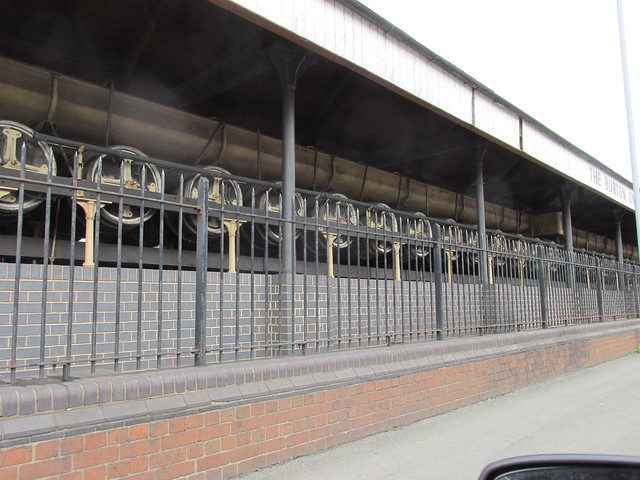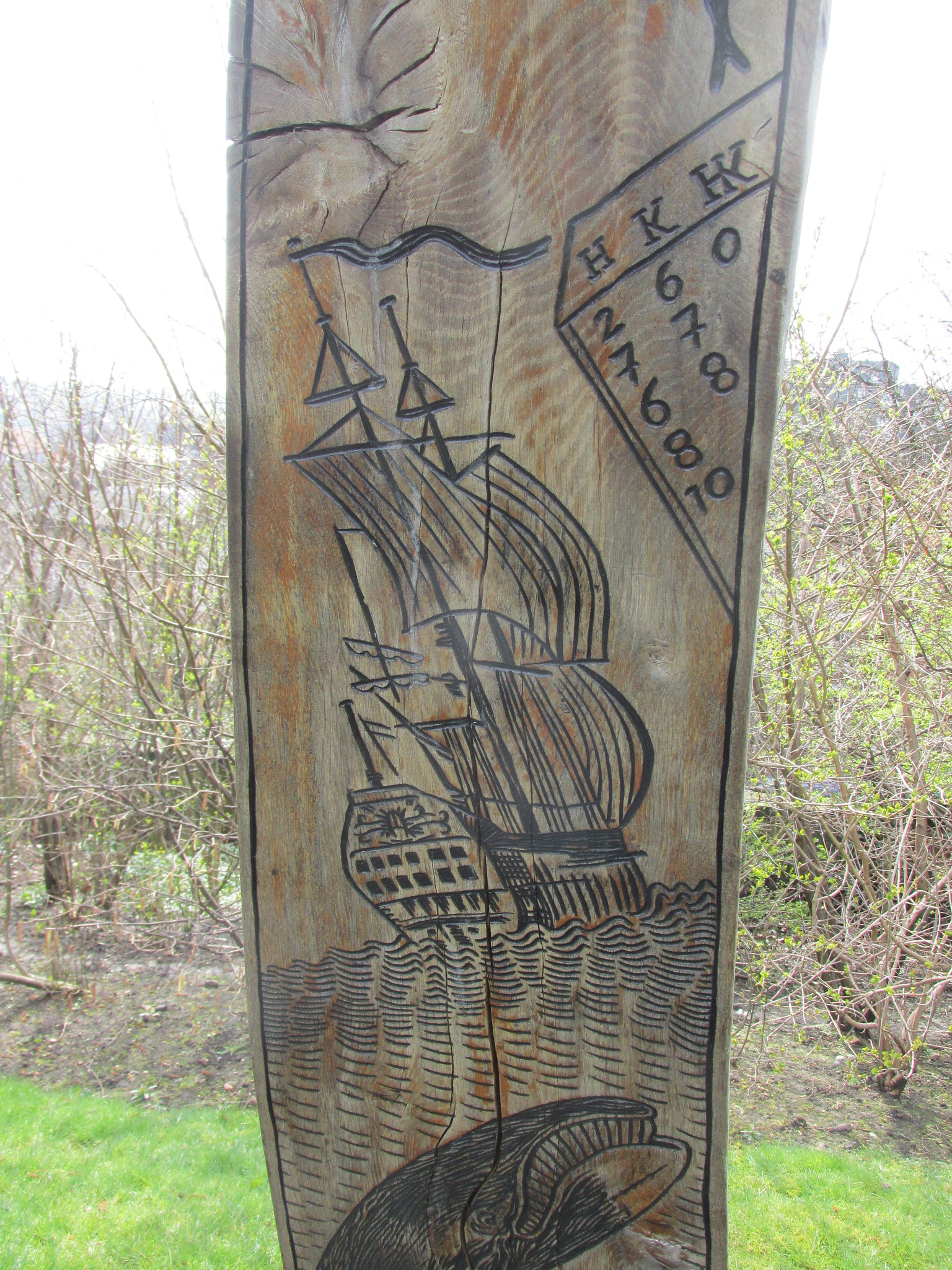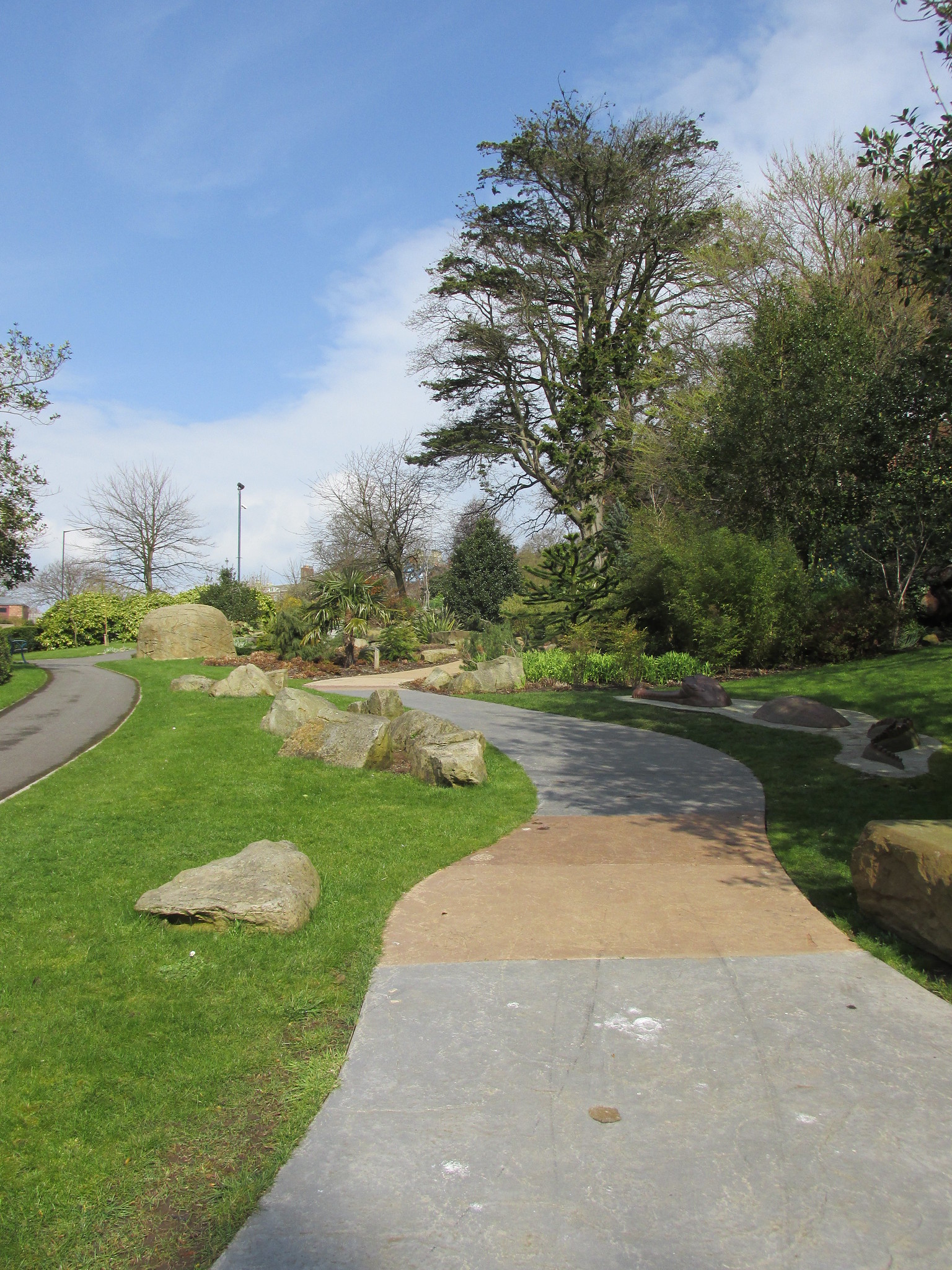Brewing beer has happened for about the last 8,000 years. Recipes have been found in Sumerian writings and Egyptian hieroglyphics, as well as regularly throughout history since.
In that time humankind has found many and varied ways to make a brew and there's even a museum devoted to it at the spiritual home of brewing, Burton-on-Trent in Staffordshire. It's worth a visit, if you're in the area, but even if you don't go in you can catch a few glimpses as you drive around the town.
Along one side of the museum car park, and conveniently next to a set of traffic lights that were red when we passed by, is an example of the Burton Union brewing system.
Breweries in Burton were traditionally known for using a system that allowed recirculation of the excess foam produced as yeast fermentation took place. (If you don't know the principles of brewing, see below.)
The yeast foam, known as barm, can take up a lot of space in a barrel. The Union system allowed foam to be transferred back through other barrels and beer to flow in to fill up the gap. So there were rows of barrels lying side by side, and linked with pipes, in the production area.
Marston's Pedigree is believed to be the last beer in commercial production using the Burton Union system.
The brewing process
Beer brewing involves steeping a source of starch (usually cereal grains) in water, then fermenting the resulting liquid with yeast. Different flavours and styles are created by means of other treatments, such as malting the grain (allowing it to begin germinating to increase sugar and starch levels) or adding hops. The resulting product can also be treated in a variety of ways such as conditioning in a cask or barrel, or adding fruit to the mix.
Monday, 25 April 2016
Wednesday, 13 April 2016
Roman Lincoln
 |
| Old photo of Steep Hill in Widow Cullen's Well |
Excavations at the castle have revealed remains of several houses on the site, including a beautiful mosaic that was wrecked by Victorian workmen during demolition of the old gaol. Other Roman artefacts are on show at the newly refurbished castle museum.
You can encounter bits of Roman Lincoln all over the city and according to a photo on show in Widow Cullen's Well (It's a pub!) there's part of an old gateway set into the wall of two shops on Steep Hill.
Other remains are quite well hidden. Down a very narrow street called East Bight are the remains of a water reservoir, built on the inside of the northern defensive wall. One wall of the tank still exists in a back garden. Its foundations are about 16 feet deep and it was lined with waterproof cement. Its capacity has been estimated at 2,660 gallons, so was probably one of several around the town. This reservoir probably helped serve the baths complex, which was nearby.
 |
| The remains of the water tank |
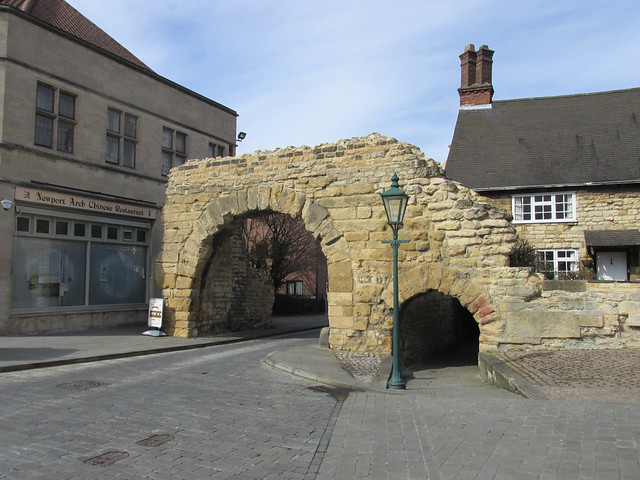 |
| Newport Arch - still in use today |
It is believed to have been built when the northern defensive wall was strengthened in the 4th century, by which time Lindum Colonia had grown in importance and served as a provincial capital. Originally the gate would have had a pedestrian arch at both sides and would have been two storeys high.
Lincoln's Roman remains are not as complete as those of York or Chester, but somehow they are more personal, more relevant to a modern observer. Well that's how I feel about them anyway. Of course I'm biased. Years ago I used to live just beyond Newport Arch and walked under it every day on my way to work. I also drove under it on my driving test. Makes me wonder now how I passed.
Saturday, 9 April 2016
Pannett Park
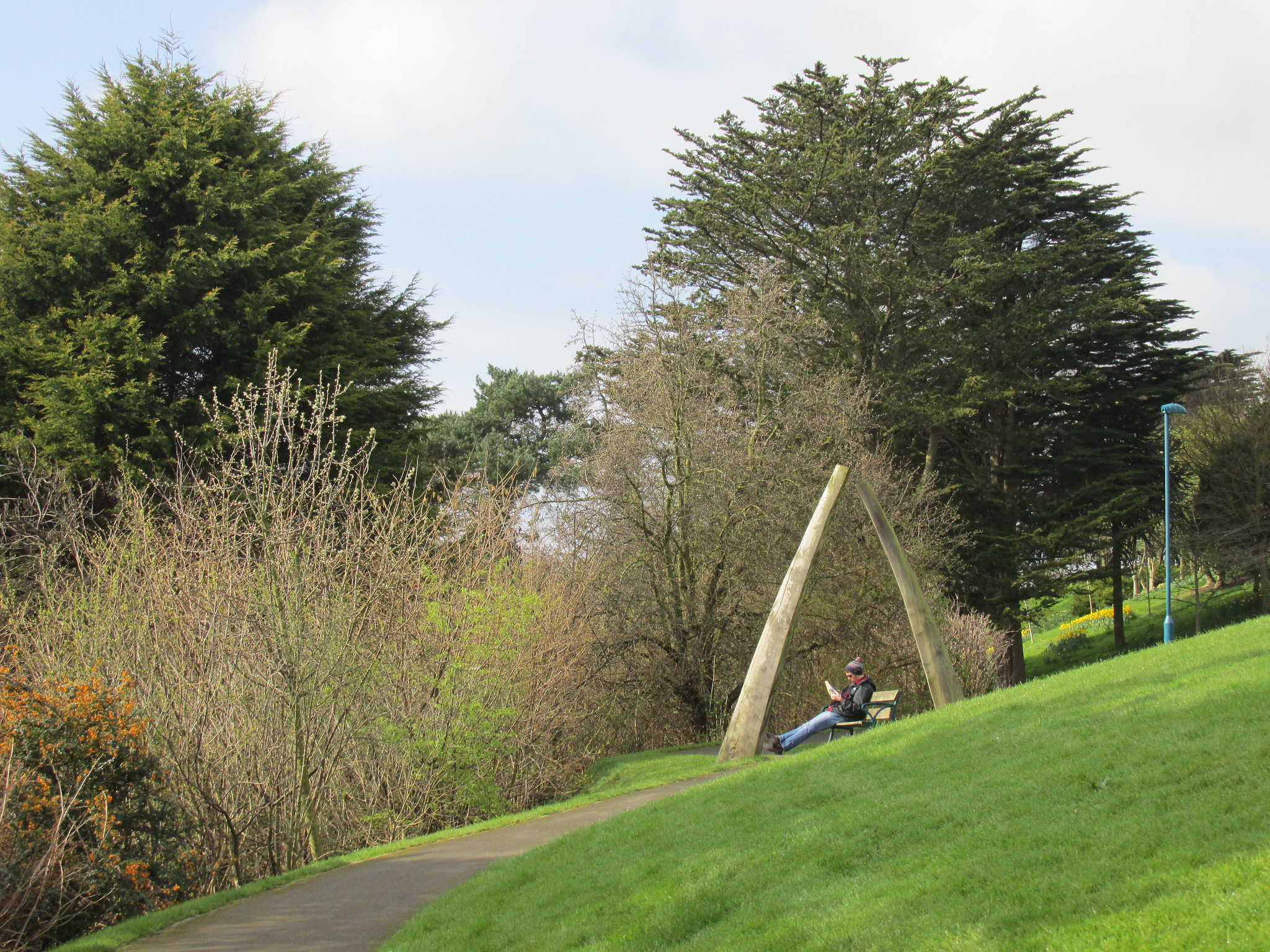 |
| Representation of the Whitby whalebone arch |
Pannett Park still exists today, and provides a delightful green space that is dotted with works of art. It's also where you'll find Whitby museum and art gallery.
Various areas of the gardens commemorate Whitby's history, for example, in the South Seas Garden you will find plants native to the southern hemisphere among artworks with Maori carvings. This marks the journeys of Captain James Cook, the explorer, who sailed from Whitby to make his voyages.
At the top of West Cliff stands an arch made from whalebones, a reminder of Whitby's past as a whaling port. There's a similar arch in the park, though this is a wooden structure carved with images of ships and nautical maps.
Whitby has no war memorial, so a commemorative garden has been set up with a wooden sculpture echoing the arches of Whitby Abbey, which can be seen from the park.
There's also an area called the Jurassic Garden, which marks Whitby's fascinating geological features. A pathway leads through the garden, with bands representing the different rock bands to be found in the area, and typical fossils set into the surface at relevant points. The path leads the walker through 60 million years of the Jurassic period and includes fossil casts taken from examples that can be seen in the museum at the top of the hill. Including dinosaur footprints!
Wednesday, 6 April 2016
Whitby Jet
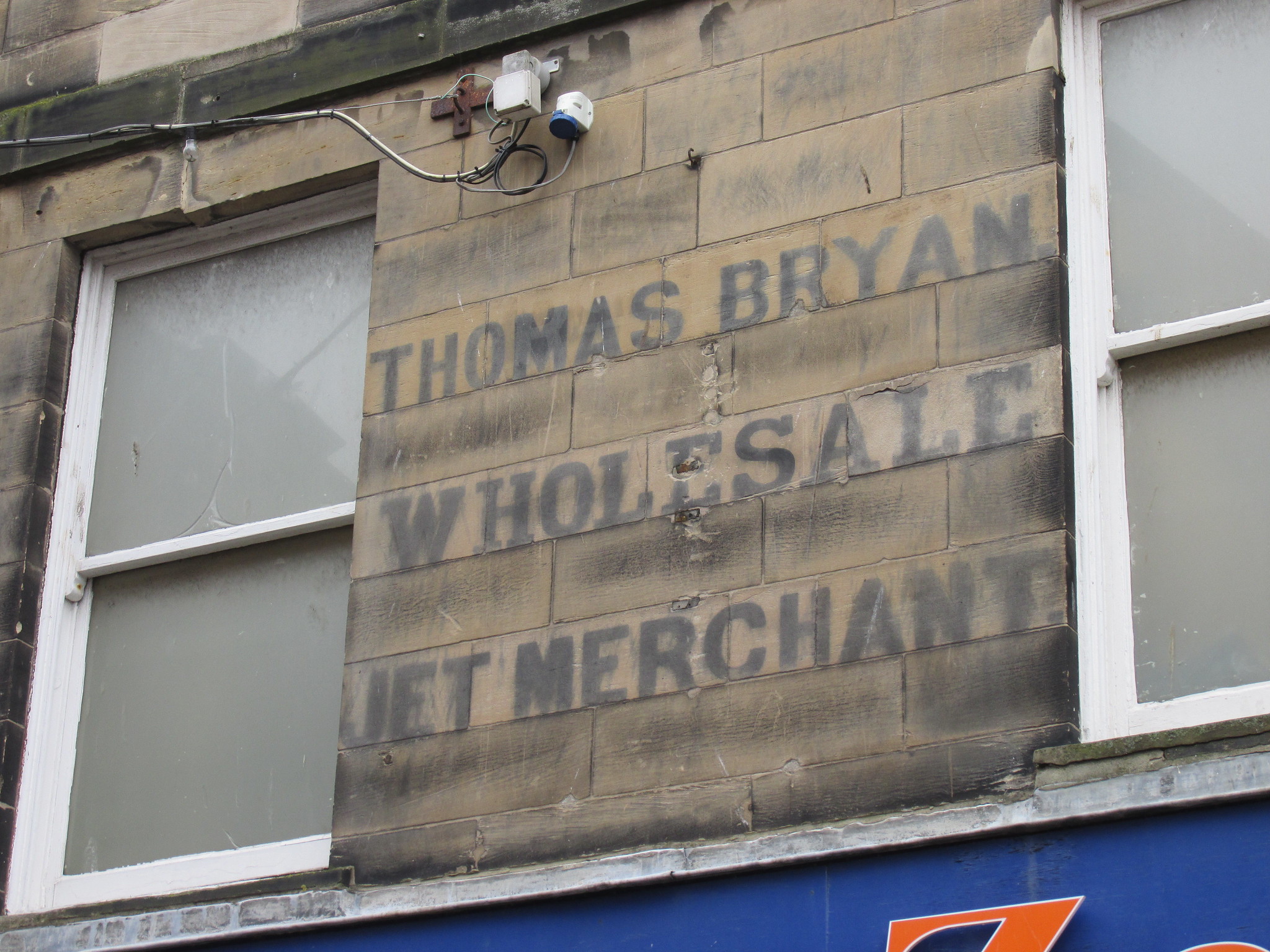 |
| Whitby ghost sign for wholesale jet merchant |
If you've never heard of jet you've almost certainly never been to Whitby, because every shop that isn't selling fish and chips is offering examples of the black, semi-precious rock. Its best known source in Britain is Whitby but there were mines all over North Yorkshire where it was extracted. The stone is fossilised wood from a type of monkey puzzle tree and is technically a specialised hard form of lignite.
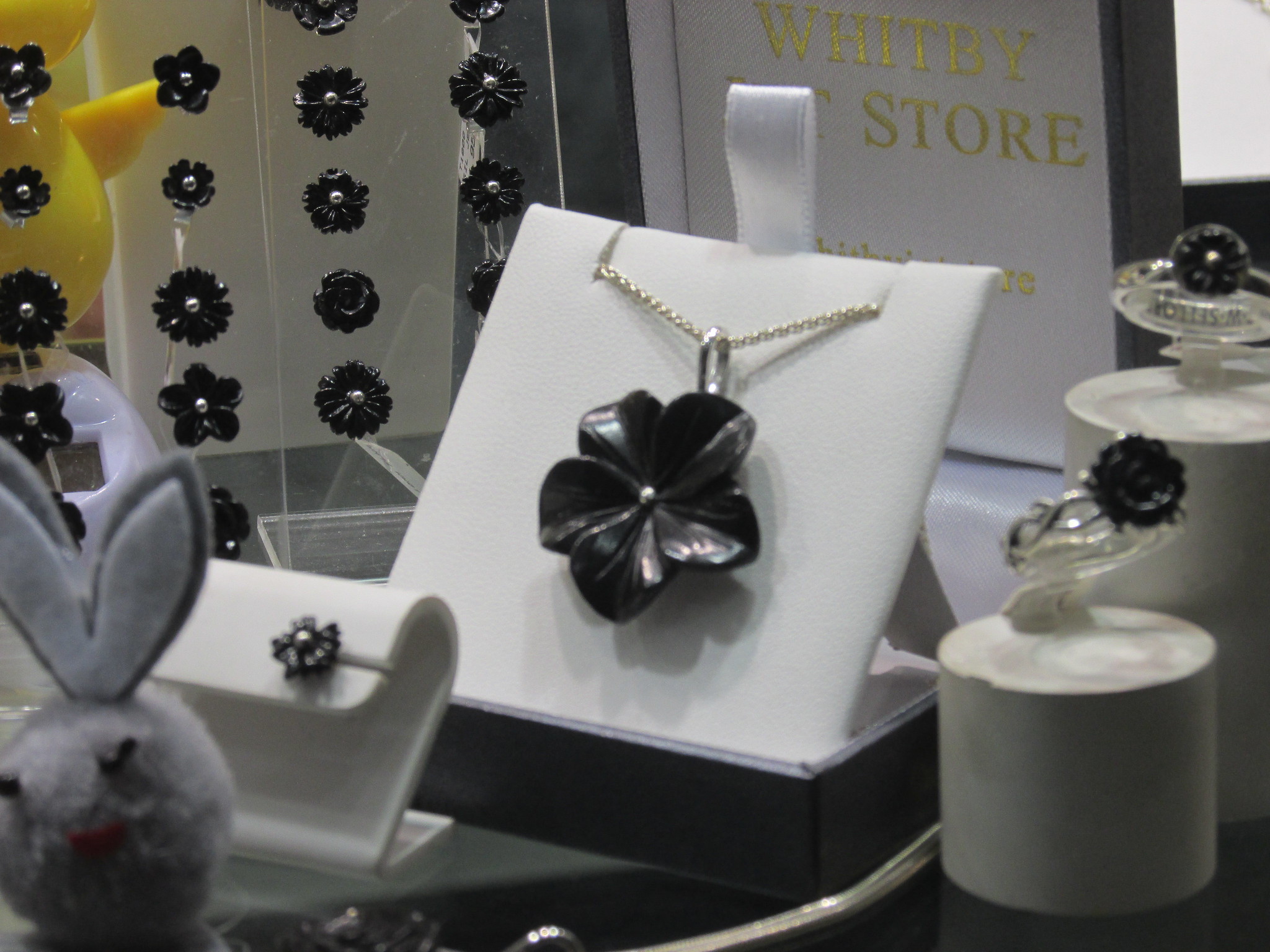 |
| Jet jewellery items in a Whitby shop window |
Jet has been used in jewellery for so long because of its lustrous hue, but also because of the belief that it had magical powers. The ancient Greeks and Romans believed that it could protect against snakes; an idea borne out by a necklace found in York during excavations of a Roman site that takes the form of a coiled snake.
| This one's mine and I wear it often |
It is also possible to find items in a substance called “French Jet” but they are not true jet and easy to tell from the real thing. French jet is actually a form of black glass and is much denser than true jet and feels cold to the touch. More difficult to identify are the various other forms of coal that have been used as jet substitutes. Cannel coal and bog oak are very similar to jet but neither has the deep black colour or the sheen that jet has.
Although the History Anorak has a taste for jet jewellery, has some knowledge of the material and owns a few pieces (see the photo) most of the history on this page has been confirmed by reference to a Shire Publication called Jet Jewellery and Ornaments by Helen Muller. J M Cronyn’s Elements of Archaeological Conservation has also been consulted.
Subscribe to:
Comments (Atom)

